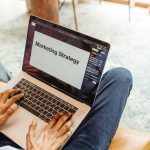Time for a new computer? Building an entry-level gaming rig or a mid-range PC from scratch may seem daunting, but it will enable you to create a dream PC with the required gaming performance. Although pre-built computers are affordable and convenient, they often lack the necessary power for specific tasks. The good news is that you’ll find a huge aftermarket for PC components, and the assembling process for a custom computer doesn’t have to be difficult.
The crucial thing to remember is that no two projects are identical. Your first task is to define your goals and learn the methods to achieve your plan. Let’s get to it.
Power Supply Unit
PCs have an appetite for electricity, and a reliable Power Supply Unit guarantees your machine will function impeccably. Do your research and calculate how much wattage your system will draw. This is the component that will distribute the power to your system. This will also dictate which of the other parts you will choose. Generally, a 500-watt PSU can power a midrange system with room for upgrades. If you want extra room, 600 watts should be a safe bet. Seven hundred watts can handle high-end components with room to spare. For non-gaming PCs, 300 watts should be plenty enough.
Motherboard
This is what will house and connect your other parts together. Like the PSU, this will also dictate your part choices later. You will know what your future upgrade path is by checking the motherboard’s features. Here are the things to look for:
- Chipset. Manufacturers will state if the chipset will let you overclock your processor or not. This can also dictate the number of peripheral component interconnect express (PCIe) lanes available for the PC.
- RAM slots. Mainstream motherboards run RAM sticks in dual-channel mode. This means that if you have two sticks of identical RAM, they can run in parallel for better performance. Check if the board has two or four slots. If you want expandability, go for four slots. More RAM lets you multitask better, while faster clocks can provide a small performance boost.
- Fan headers. These will determine how many fans you can attach. Any fans connected to the motherboard may be controlled through its BIOS. Otherwise, if the headers are not enough, you will need to attach them using Molex connectors. These will run the fans at full speed.
- SATA headers and m.2 slots. These will dictate how much serial advanced technology attachment (SATA) or m.2 storage drives you can connect.
- PCIe. This is where your video card will slot in.
Another thing you must look for is the size of the motherboard. The smallest one is ITX, mainly used for small form factor PCs. Due to its size, it usually has only two RAM slots and one PCIe slot. The next size up is micro ATX or mATX. This is a good mix of having a compact size and full features. The next size is ATX. This is larger and has more PCIe slots than mATX.
Processor
The computing power of a PC stems from its central processing unit (CPU), usually the single most crucial component in the PC component hierarchy. Tech giants Intel and AMD have cornered the market, offering the best-performing CPUs. Countless models are available, from Intel’s Gen i5, i7 and i9 to AMD CPUs like Rayzen.
Your pick will come down to the purpose of the rig, such as gaming, video editing, or encoding. You should focus on the number of cores and speed measured in GHzs. Multi-core CPUs should be on top of your purchase list. Cash memory is next on the agenda. Computers have storage and RAM, but cash memory is integrated into the CPU and uses static RAM. On average, higher-end CPUs have a larger cache. Double-check if the sockets on the motherboard and CPU are compatible – some brands have unique sockets.
Video Card
A necessity if you’re looking to game on your PC. This is where the bulk of your budget goes. Ideally, half of it should be spent here. What games will you be playing, and at what resolution?
The Graphics Processing Unit (GPU) or the video card is the first reference during a gaming PC build. Graphic cards tend to be the most expensive part of a build and require a lot of research. Start by looking at the TDP value, an indicator of how much heat the GPU produces and if you need more powerful fans to distribute the extra heat.
Look for models with shader cores, such as CUDA cores by Nvidia and stream processors by AMD. Cards with more shader cores will generate higher-quality image rendering. Every high-end video card comes with integrated RAM. Your goal should be to find a model with a minimum of 16MB of RAM.
Video cards at the $400 to $500 range typically should let you game on high settings at 1440p resolution. You can push it to play some older games at 4K. Two hundred fifty dollars to $350 should give you excellent performance at 1080p. Two hundred dollars below should let you play popular eSports titles at 1080p.
Monitor

If you’re into competitive games, consider prioritizing the refresh rate. Refresh rates of 144hz and above should let you game with great responsiveness. Other factors you want to consider are the size and native resolution.
Case
Choosing your case is a matter of preference. Find one that suits your taste. Make sure that the motherboard you choose fits in it. Be mindful of its airflow as well. The case should have enough openings.
Others
You can start with a regular keyboard and mouse. The important thing is that you build the best performing PC that you can first before anything else. Your PC’s performance will be the main factor in how good you can play on competitive games. Additional costs will come from the operating system license and other software and peripherals.
So there you have it. With this guide, you should have a better time choosing your PC parts. You’d better start doing your homework now to build your PC soon.
Step-By-Step Process To Build A PC
Formulating a shopping list of components is the initial step in the project. You should identify PC components from reputable manufacturers that offer the desired performance. Pay attention to compatibility between components and leave space for future upgrades. Let’s examine the important components.
RAM Memory
Your computer’s short-term memory relies on RAM to operate applications efficiently. You can find two primary forms of RAM: Dynamic Random Access Memory (DRAM) and Static Random Access Memory (SRAM). Of the two, SRAM is more expensive. It offers better performance without the electronic charge refreshes that DRAM requires. Choose 32GB RAM as a single stick or a pair of 16 GM stick for optimal performance.
Storage Options
Hard drives are a computer’s memory bank, and the trend is to move away from HHD and migrate toward SSD storage. The interface for SSD is SATA or PCIe NVMe. The more affordable option is SATA, but PCIe is up to 10 times faster than SATA. The latest models of M.2 SSDs support NVMe.
Finding A Streamlined Case
PC housings are not the primary topic of conversation when discussing computers. However, it’s imperative to take center stage for a DIY project. It’s a common mistake to focus on aesthetics and purchase a fancy PC gaming case, and during assembly, discover an inconvenient layout or that there is no room for extra fans. Choose your PC case by considering the parts that will go in, and ensure sufficient airflow can circulate.
PC Assembling Instructions You Must Follow
Once you have compiled your parts inventory, it’s time to build your PC. You won’t have any issues if you double-check the instructions.
1. Fine Tune Your Case and Instal the Motherboard
Unpack and inspect the case for any cracks or faults. If everything is to specs, position your tools near the workbench for easy access. The first component that needs installation is the motherboard. Considering it’s a large circuit board, you’ll need to be cautious when handling its placement in the case.
Consult the motherboard manual to see where to place the small spacers separating the motherboard from the casing metal and prevent short-circuiting. They are preinstalled on most motherboards, and no tinkering is required. Different case types, such as ATX and ITX, have different fittings and configurations. It may be necessary to modify their position to fit the case better. You can achieve this with nose pliers in minutes, but ensure you don’t scratch the board.
Double-check where the screw holes are and if they align before tightening the board. Do not exert too much pressure. You do not want to bend the board, but at the same time, do not leave it loose. The final stage of the installation is covering external connections with an I/O shield that easily snaps.
2. Plugging in the Motherboard
The installation of the motherboard serves as the foundation for mounting all other components. As a rule of thumb, you can apply a moderate degree of force when placing components into the respective sockets.
Most other parts don’t require any screws, except the power supply you can attach next. The usual spot for mounting the PSU is the upper back of the case, although this can vary, given that some models make allowance for the bottom section. After securing the PSU to the case, plug the power connector into the motherboard.
Don’t touch the power cable for the electrical socket. You do not want electricity during the installation phase. The best way to prevent that is to practice cable management and have a tidy case.
3. Adding the CPU and Coolers
The arrow symbols indicating proper alignment help with the CPU installation. Remove the cover of the CPU socket and drop the unit, being careful not to damage the pins. If it’s in position without leeway, put the retaining bracket down over the CPU edges and press the tension lever down. Processor designs are becoming more complex, meaning you must read the manual before performing an installation.
Processors come paired with coolers which are adequate for regular PC work. However, you may plan to drive your rigs harder, and additional ventilation is required to dissipate the extra heat. Aftermarket coolers are abundant, with visually appealing styles and quieter performance. There are liquid CPU cooling systems with rubber tubing hoses circulating water and absorbing extra heat.
Once you have your cooler of choice, peel the protective films and apply the thermal paste for more efficient temperature conduction between the processor and the CPU cooler. Don’t go overboard – a small layer will suffice. Otherwise, you may stain or compromise other sockets. Following the attachment of the cooler, connect the fan to the motherboard in the designated socket.
4. The Easy Tasks are RAM, GPU and Storage
Installing RAM is the easiest chore on the checklist. Open the latches of the RAM slot or slots, depending on how many RAM sticks you plan to install. If they do not fit on the first try, flip them over and give them another go until they snap in place. Once seated, press the latches on both ends of the slot, and they will close independently. Give the RAM stick a little nudge to be sure they are in place.
The method used for RAM installation is similar to hooking up the storage drives. SATA hard drives are 2.5-inch or 3.5-inch, with the former being dominant among SSD storage devices. Mount your SSD in the bracket with screws. On some chassis models, snapping it into place is an option. Couple the SATA cable to the drive and motherboard and connect the hard drive SATA power connector from the PSU to your hard drive.
Some CPUs have integrated graphics cards, eliminating the need for additional hardware. Yet, if you plan to be a serious gamer, a standalone video card is the way to go. There is no philosophy in connecting a graphic card. Slide it into the PCI slot and secure the latch.
5. The Test Run for Your Gaming PC
Once you connect all the cables, double-check every component before you plug in the monitor and power the rig up for the first time. Insert the cables for the mouse and keyboard in the USB ports and press the power button to bring your new PC machine to life.
If an error message flashes on the screen, it shouldn’t cause concern. That’s a reminder that no operating system is available. This can get remedied by installing Windows or Linux via the boot device selected through the UEFI/BIOS. As soon as you activate the operating system, you can start gaming or video editing and perform a true test of the full potential of your new unique PC.
Conclusion
It doesn’t take much to assemble a computer, although it may seem challenging to first-time builders. The key ingredients are knowledge, patience, time, and some muscle power. PC building is a worthwhile endeavor enabling you to have fun and take pride in having your machine.
As a DIY project, it’s not only useful for creating a suitable computer for your needs. It teaches you how components function, opening the road for more challenging builds and future upgrades on your existing rig. The tips shared can serve as a guide. However, it’s only a blueprint highlighting the crucial steps. You must be diligent in your research of computer parts before embarking on your first PC build.
FAQs About PC Build
1) What components do I need to build a PC?
The suite of components for a custom build includes a case, motherboard, processor unit, RAM, SSD storage, graphics card and coolers.
2) What is the best CPU for gaming?
The pick of the best CPU for gaming depends on a balance between budget and performance. Currently, two brands are vying for dominance: AMD Ryzen 7000 series and Intel Core i5-12600K i9.
3) How much RAM do I need to build a PC?
It depends on the purpose of the PC. For normal school or office work, 8GB of RAM is sufficient, but if you are a gamer, 32GB is required.
4) What size power supply do I need for my PC?
Modern systems with high-performance CPUs and video cards require power supply units delivering 600W to 800W.
5) How do I install an operating system on a newly built PC?
Enter BIOS and select the boot order to prioritize DVD or USB flash. Insert a Windows DVD or bootable USB flash stick with the installation package for an OS. After the installer loads, press the “Install Now” button.



